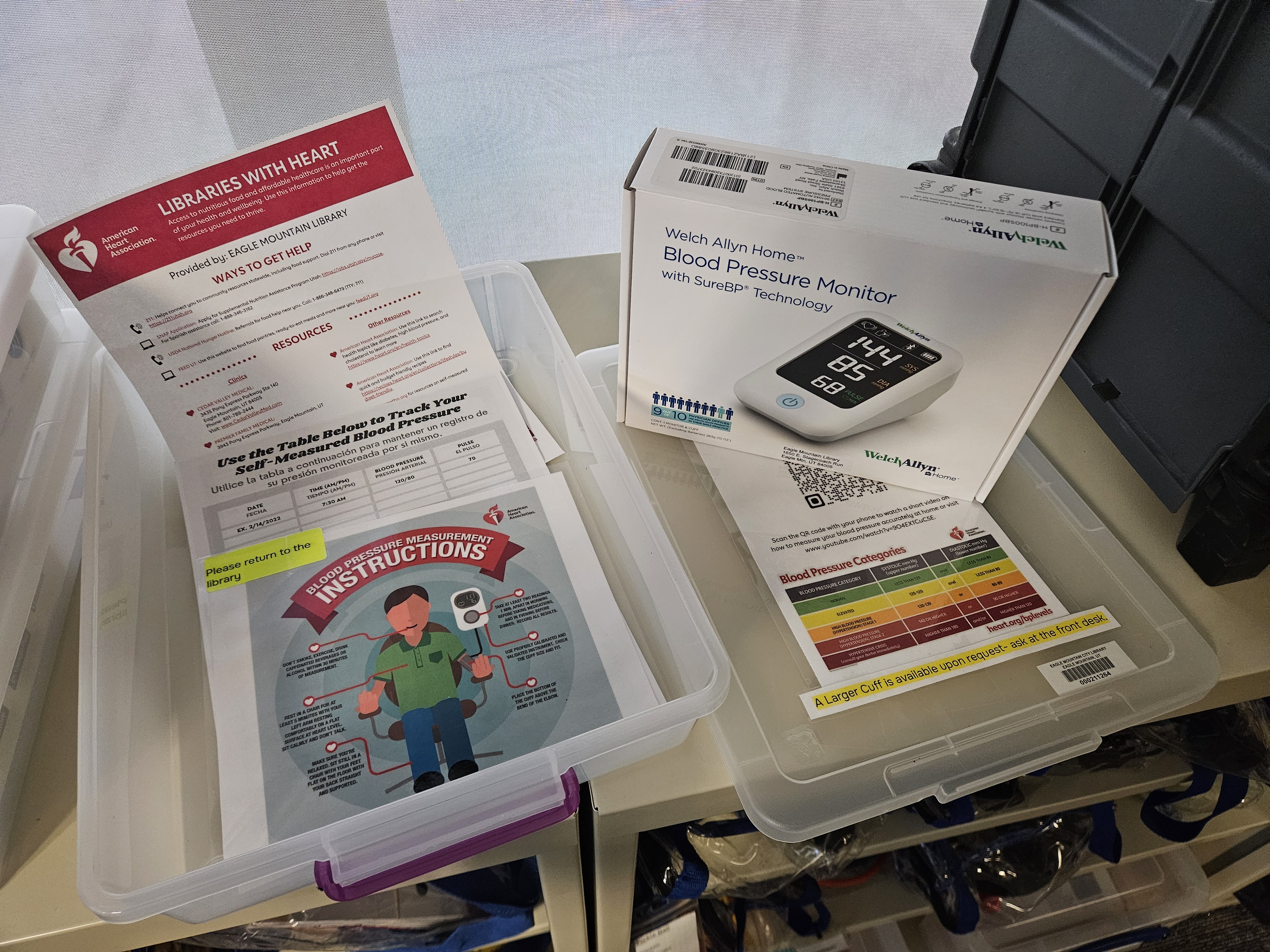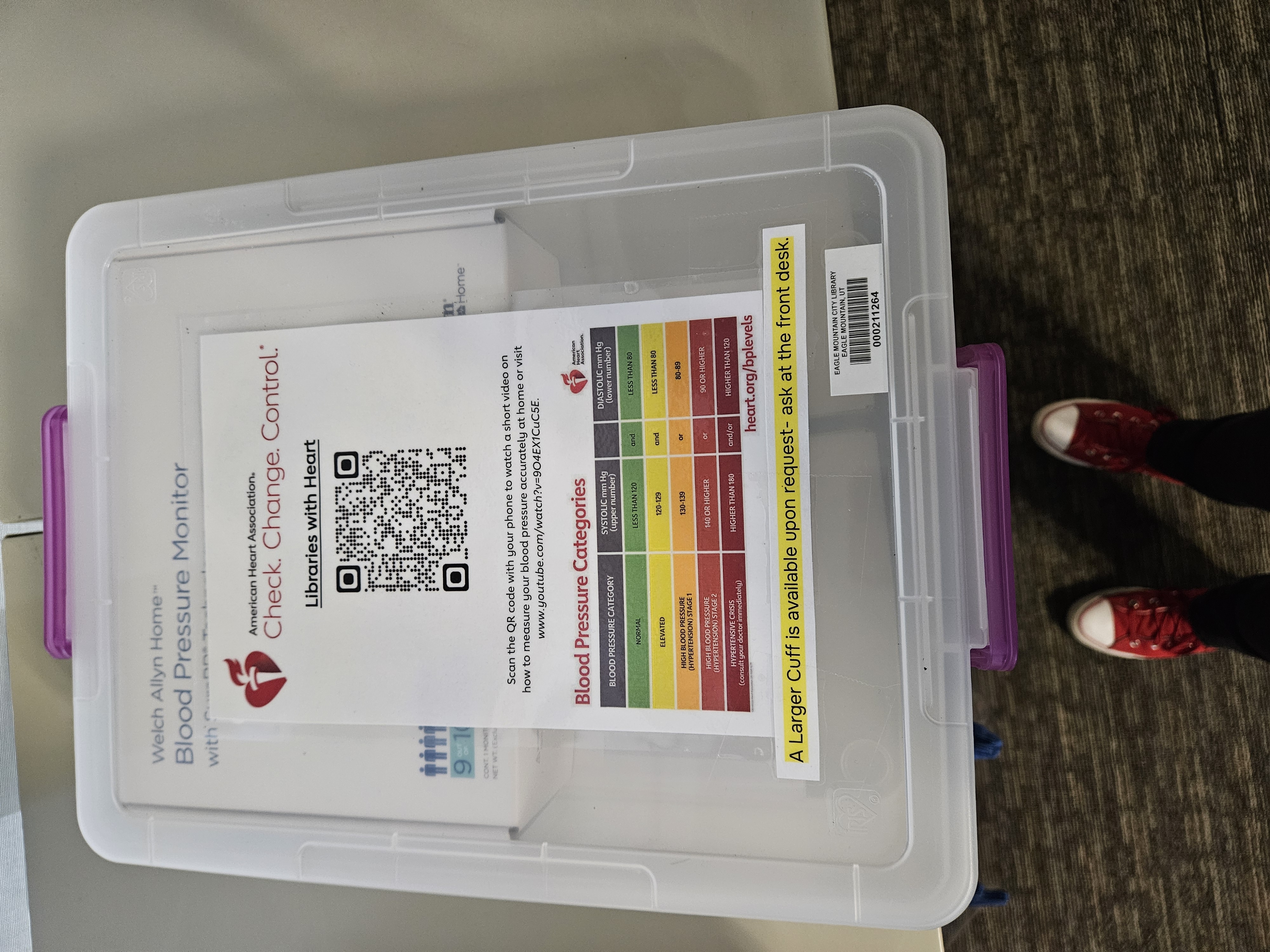Did you know you can borrow a blood pressure kit from the Eagle Mountain Library? All you need is your library card. The kit contains blood pressure equipment, instructions in English and Spanish and educational resources on high blood pressure.
One in four Utah adults don’t have their high blood pressure under control. Uncontrolled blood pressure can cause heart attacks, heart failure, stroke and other conditions which rob us of precious time with loved ones.
Protect your health and monitor your blood pressure at home free of charge. For more information on hypertension, visit www.heart.org.


Many Americans wrongly assume they understand what normal blood pressure is – and that false confidence can be deadly

Wändi Bruine de Bruin, USC Dornsife College of Letters, Arts and Sciences and Mark Huffman, Washington University in St. Louis
Stunning as it may sound, nearly half of Americans ages 20 years and up – or more than 122 million people – have high blood pressure, according to a 2023 report from the American Heart Association. And even if your numbers are normal right now, they are likely to increase as you age; more than three-quarters of Americans age 65 and older have high blood pressure.
Also known as hypertension, high blood pressure is a major risk factor for heart disease and stroke.
Our research has found that most Americans don’t know the normal or healthy range for blood pressure – yet strikingly, they think they do. And that is cause for serious concern.
We are a health communications expert and a cardiologist. Together with our health communication collaborators, we surveyed more than 6,500 Americans about their knowledge of blood pressure. They were recruited through the Understanding America Study, a nationally representative sample of U.S. residents.
In our new study, published in January 2023, we found that 64% expressed confidence in their understanding of blood pressure numbers – but only 39% actually knew what normal or healthy blood pressure is. A healthy diet, more exercise and less salt and alcohol are all ways to improve your blood pressure numbers.
False confidence, deadly consequences
Such false confidence can be harmful because it may prevent people from seeking care for high blood pressure. After all, if you think it’s normal, why bother talking to your doctor about your blood pressure?
Part of the reason for this overconfidence begins in the doctor’s office. Typically, a nurse brings over a blood pressure cuff, straps it on your upper arm and takes a reading. The nurse may announce the result, remove the cuff and record it for the doctor.
When the doctor arrives, the session may well move on to other matters without a word about the blood pressure reading. This likely happens because your doctor wants to focus on how you’re feeling and why you’re there. But as a result, you may leave your appointment thinking your blood pressure is fine, even if it’s not.
About 70% of Americans will have high blood pressure in their lifetimes. What’s more, only 1 in 4 patients with hypertension have their blood pressure under control. And because high blood pressure usually has no symptoms, you can have it without knowing it.
To lower your risk of heart attacks and strokes, it’s critical to understand your blood pressure readings. This is especially true for patients with conditions such as heart disease, kidney disease and diabetes.
What the numbers mean
Blood pressure is reported with two numbers. The first number is your systolic blood pressure; it measures the pressure in arteries when the heart beats. The second number, your diastolic blood pressure, measures the pressure in your arteries between heartbeats.
Normal or healthy blood pressure is less than 120/80 millimeters of mercury (mm Hg) for adults. This is a unit of measurement that stems from early blood pressure monitors, which looked at how far your blood pressure could push a column of liquid mercury. For most patients, lower tends to be better.
Stage 1 hypertension, which is the lower stage of high blood pressure, begins at 130/80. Stage 2 hypertension, which is the more severe stage of high blood pressure, begins at 140/90. Both numbers are critically important, because every increase of 20 millimeters of mercury in systolic blood pressure, or 10 in diastolic blood pressure, doubles a person’s chances of dying from a heart attack or stroke.
10 tips for healthier blood pressure
To avoid false confidence, ask about your blood pressure at every doctor’s visit, and find out what the numbers mean. If your blood pressure is above the normal or healthy range, then the American Heart Association recommends the following 10 tips.
- Talk with your doctor. If your blood pressure is high, ask your doctor about strategies for lowering it, and how you can track your blood pressure at home.
- Eat a heart-healthy diet. Vegetables, fruit, whole grains, low-fat dairy products, skinless poultry and fish, nuts and legumes, and olive oil are all good for your heart. Red meat, saturated and trans fats and ultraprocessed foods are unhealthy for your heart.
- Cut back on salt, which increases blood pressure. The Dietary Guidelines for Americans recommend no more than 2,300 milligrams of sodium per day – that’s less than one teaspoon – but the U.S. Food and Drug Administration reports that the average American takes in about 3,400 milligrams daily, roughly 50% more than recommended. Even if you don’t add any salt to your meals, you may still get too much from ultraprocessed foods. One serving of canned chicken noodle soup has 680 milligrams of sodium. One Big Mac from McDonald’s has 1,010 milligrams of sodium.
- Limit your alcohol use. Whether it’s beer, wine or spirits, alcohol increases your blood pressure. It’s better to not drink alcohol, but if you do, observe the limits recommended by the Dietary Guidelines for Americans. For women, that’s one drink per day at the very most. For men, it’s two drinks per day at most. One drink is 12 ounces of beer, 4 ounces of wine, 1.5 ounces of 80-proof spirits or 1 ounce of 100-proof spirits.
- Be more physically active. Just two and a half hours per week of physical activity can help lower blood pressure. For example, that’s a 30-minute walk five days a week. You might also switch up your physical activity by swimming, lifting weights, doing yoga or going dancing.
- Maintain a healthy weight. Even losing a few pounds can help manage high blood pressure in people who are overweight. Ask your doctor about a healthy approach to weight loss.
- Manage stress, which is bad for your blood pressure. While stress relief doesn’t always lower blood pressure, bringing down your stress level can help you feel better. The Mayo Clinic recommends several ways to manage stress, including learning to say no sometimes, spending time with family and friends and meditating.
- If you smoke, vape or both: Quit now. Both are bad for your heart and blood vessels and contribute to high blood pressure. Quitting smoking may reduce your heart disease risk to nearly the same level as people who never smoked. And the benefits of quitting start right away. A recent study found that after just 12 weeks, people who quit had lower blood pressure than when they were still smoking. The Centers for Disease Control and Prevention has recommendations for programs and medication that can help you quit.
- Take medication, which is often recommended for people with stage 2 hypertension, and for some with stage 1 hypertension, including those who also have heart disease, kidney disease or diabetes. Most patients need two to three medications to lower blood pressure to normal or healthy levels. A recent meta-analysis demonstrated that lowering systolic blood pressure by 5 mm Hg through medication reduces the risk of major cardiovascular events by about 10%, irrespective of baseline blood pressure or previous diagnosis of cardiovascular disease.
- Track your blood pressure at home. The American Heart Association recommends an automatic, validated cuff-style monitor that goes on your upper arm. A record of readings taken over time can help your doctor adjust your treatments as needed.
High blood pressure is a silent killer. Being proactive and knowing your numbers can be a lifesaver.
Wändi Bruine de Bruin, Professor of Public Policy, Psychology and Behavioral Science, USC Sol Price School of Public Policy, USC Dornsife College of Letters, Arts and Sciences and Mark Huffman, Professor of Medicine, Washington University in St. Louis
This article is republished from The Conversation under a Creative Commons license. Read the original article.
Mike Kieffer – Editor-in-Chief, Cedar Valley Sentinel
Mike Kieffer is a dynamic leader and community advocate based in Eagle Mountain, Utah. He serves as the Editor-in-Chief of the Cedar Valley Sentinel, a local publication dedicated to informing, inspiring, and elevating the Cedar Valley community through honest and accurate journalism. With a passion for fostering connections, Kieffer has made it his mission to highlight local businesses, provide reliable news, and support community development.
Beyond his editorial role, Kieffer is the owner of Lake Mountain Media, LLC, a company specializing in media and communications, and the co-owner of Quail Run Farms, which focuses on sustainable farming and community engagement. He also actively contributes to the local economy and culture as a member of the Eagle Mountain Chamber of Commerce.
Kieffer’s dedication extends to preserving and promoting the history and heritage of the Cedar Valley area. He often participates in community-centered events and media, including podcasts that explore the unique aspects of life in the region. Through his varied endeavors, he remains a steadfast advocate for the growth and enrichment of the local community.
